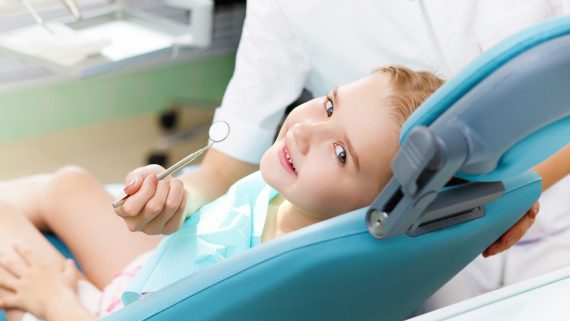Traditional Impression Technology
In 1984 the first “digital” impression was introduced into the world of dentistry. This meant that instead of having to fill a patients mouth with impression materials, digital images could be taken with a miniature camera and once stitched together, could be used to fabricate a model on which a crown or bridge could be made. This was a real advantage because the patient wouldn’t be drooling and/or choking on the impression material waiting for it to set up, a process normally taking 3-5 minutes! On the other hand, the scanners at the time were very expensive and many doctors felt these first prototypes were not as accurate at the impression materials were.
Digital Imaging Impressions Today
Fast Forward to today. Along with the advances in computer technology, computer imaging has progressed by leaps and bounds. Along with this, the number of competitive dental imaging companies has exploded. Now, instead of taking images of just one tooth, we can scan full arches. Two methods are now in use and competing with each other. One, takes still images and “stitches” together these images into a data base that can be transmitted over the internet to the lab for model fabrication to make a crown, bridge or denture. The other method uses video capturing and essentially does the same thing with regards to stitching and transmitting that data to the lab.
Both systems whether it be a series of still pictures or a video capture of the image, produce accurate replicas of your mouth and from the models produced, can allow the laboratory to fabricate beautiful restorations. Past systems required fairly large units, called cart systems, that represented look a likes to R2D2 when used in the dental office, and required special software programs (closed systems) specific to their particular manufacturer in order to communicate that information to the lab (i.e. proprietary software). If your lab didn’t have the right software, you were out of luck! However, now most newer systems are “open” and all labs can take them. In addition, the newest systems have traded the old mobile units (sorry R2D2!) for USB connections that can be used on any computer!
How It Affects You
So, the next time you’re in your dentist’s office you might be surprised if you need a crown, bridge or even a denture (coming soon!). The “early adoption” phase of digital impressions is moving into the “becoming widely accepted” phase. With more manufacturers entering the market and more competitive pricing as well as wider acceptance and use, you may be pleasantly surprised to find your dentist “scanning” your mouth without the old impression materials and enjoying a much more comfortable experience! Looks like 2015 will be a great year to see your dentist after all!
First – The Facts: The Ebola virus is spread through direct contact only!That is, it has to be transmitted through broken skin or a mucous membrane by blood or body fluids (urine, feces, saliva, vomit or semen) from a person who is sick with it, or by an object (like needles) that have been contaminated. References to Ebola mutating to airborne transmission come from a 2012 study involving a contamination of monkeys from pigs in an adjoining cage and surface cross contamination was the suspected real cause. Also, although Ebola mutates at a high rate, in studies of viruses for over 100 years “we’ve never seen a human virus change its mode of transmission.”
Second – Transmission: Fluids from those infected must be transmitted to a new individual before the first dies, or the virus can’t survive. The CDC reflects an incubation time of 2-21 days, however, the World Health Organization (WHO) extends the amount of time a patient could be contagious to almost 42 days, because approximately 12% of those infected may show symptoms beyond the initial 21 days. Testing for a fever while traveling though the airport is like trying to win the lottery, unless you hit it just right, you’ll miss detecting an Ebola carrier. This screening is more for us, the public, than it is to prevent the spread of the disease! Going Airborne for Ebola means catching a ride on an airliner and introducing and distributing itself into a new territory or country. Efforts to isolate it have already been severely compromised by our government’s slow or lack of proper response. Nigeria stopped its Ebola outbreak cold and it’s a 3rd world country! Their most recent case was on September 5th according to the WHO because they used WHO’s guidelines for strict infectious controls and responded quickly keeping those infected in local, isolation treatment centers… and using appropriate protective equipment. They also ran intensive education and awareness programs. Shortly thereafter our CDC stated that there was only about a 10% chance of Ebola arriving in the US. Thomas Duncan was identified as our first case… the next day!
Third – Prevention: The symptoms of Ebola are similar to the flu. Fever, severe headache, muscle pain, weakness, diarrhea, vomiting, abdominal (stomach) pain and unexplained hemorrhaging (bleeding or bruising). Most flu cases seen this winter will probably start out as heightened fear of having Ebola. Dentists and their staff will should require anyone with these symptoms to “stay at home” but if symptoms persist, see their medical doctor as a safety precaution for the patient, their staff, and the community. In addition, our office will require anyone who’s traveled from Africa to wait 6 weeks (instead of the 21 days recommended by the CDC) before being seen for treatment. Strict guidelines are followed for recommended gowns, masks, gloves and face protection and proper disposing of contaminated materials. If a patient shows signs of a possible Ebola infection, the local health authorities must be notified immediately.
All that said the potential for encountering an individual with Ebola is REMOTE. It is important for all of us to maintain a vigilant approach for preventing it’s spreading into our community. As your dentists, we often are the first line of detection and defense!
Gum Disease is an infection by germs in the gums around your teeth. It is one of the most common infections in people throughout the world. In its more serious form – known as “periodontitis” – the infection is long lasting. The soft gums and bone around the teeth dissolve over time. This can lead to the loss of teeth. One-half of the U.S. Population 30 years and older has periodontitis, as do 60% of those over 60.
Periodontitis raises blood sugar and may lead to type 2 (Adult Onset) Diabetes
People with diabetes, especially uncontrolled diabetes, have more gum disease than those without diabetes. Now, scientists are finding that the sum disease raises blood sugar levels in people both with, and without diabetes.. At a recent meeting of the top dental and diabetes researchers from around the world, scientists looked closely at the latest research into how gum disease affects humans. They found that, compared with those having healthy gums, people with periodontal disease:
- have higher long-term blood sugar levels
- have a higher risk of developing type 2 diabetes
- have a higher risk of developing pregnancy diabetes
- have a harder time controlling their type 2 diabetes
- are at a higher risk of experiencing harm to eyes and kidneys, as well as heart attack and stroke
How does gum disease make blood sugar levels go up?
Scientists think that the germs that infect gums leak into the blood stream after normal activities like chewing or toothbrushing. This starts a reaction from your body’s defense system, which, in turn, produces some powerful molecules that have harmful eFfects all over your body. Pert of this is raising your blood sugar levels.
Can gum disease treatment help control your diabetes or tendency to become diabetic? YES! The good news is that in people with type 2 diabetes, treatment of periodontitis (for example, deep cleaning and scaling, laser decontamination, etc.) can lead to a drop in their blood sugar levels. The benefit is similar to what you might find if you added another medication to your diabetes medicine.
What you can do!
- KEEP YOUR GUMS AS HEALTHY AS POSSIBLE WHETHER YOU HAVE DIABETES OR NOT!
- Brush your teeth twice a day with a soft-bristled brush and a fluoride toothpaste.
- Clean between your teeth with floss or another interdental cleaner daily.
- Visit your dentist regularly for checkups and cleanings.
- Make sure your dentist checks your gums and measures the spacing between your teeth and gums looking for gum disease.
Whether you have type 2 diabetes or not, keeping your gums healthy can help you control this disease or your tendency towards it, as well as lower your risk of experiencing blindness, kidney disease, heart and stroke problems. The latest research on links between gum disease and diabetes, stroke, etc. show how important it is to have healthy gums. HAVING A HEALTHY MOUTH IS AN IMPORTANT PART OF GOOD OVERALL HEALTH!
Ceramic, Non-Metallic Crowns are the current rave in Cosmetic Smile Enhancements. Everyone wants teeth that, once restored, “Brighten Your Smile” and give you that overall “Glow” your face has begun to miss as we age and begin to wrinkle and tarnish a bit. The old metal crowns had been replaced in the mid-1960’s by porcelain jacket crowns. But by the mid-1980’s these crowns showed a 25% chance of failing after 11 years and in posterior teeth it was much greater! Fortunately, in 1983 Horn, Simonsen and others introduced the first bonded porcelain crowns. However, although these crowns didn’t fracture as often, they frequently came loose from their underlying teeth because their dental cements didn’t adhere well to dentin.
Modern Advancements in Crown-Related Procedures
Today, along with the development of newer cements, the modern-day all-ceramic crowns have arrived. These new systems not only stay bonded to teeth well, they can also be categorized into two groups: those that are translucent and very natural in appearance and those that are more opaque having a higher-strength core that resist extreme chewing forces. Both are fabricated without a metal backing and therefore do not show their metal (called “shine through”) up by the gum line as their owner’s gums recede with age.
Zirconia
There are several companies producing various formulations of these ceramics and supplying them to the dental labs for crowns and bridges. Just to keep it simple, the opaque, stronger crowns are made from a Zirconia core and used in posterior teeth because they can withstand the stronger forces exerted in that region. The translucent, more color adjustable crowns are made from a pressured ceramic and are thus mostly used for anterior teeth. For those who have very strong bites and/or grind at night we now have a third option which allows us to “layer” porcelain onto the Zirconia based crowns resulting in stronger anterior teeth that won’t chip with their nighttime bruxism!
Which option applies best to you?
In General the dentist will pick the appropriate cosmetic crown for you based on several factors including how much support is needed, whether the teeth are discolored, how much of the tooth is remaining, whether it will show when you’re speaking, eating, smiling, etc., as well as how much clearance you have with the opposing teeth, where your gum line is located, and finally, the color of your teeth. If you have an “unusual” color disposition, then the translucent crown may be the best choice!
Aenean molestie faucibus fringilla.
Quisque in nulla ut metus cursus commodo non vitae nibh. Curabitur euismod sem vel velit blandit, sit amet molestie sapien pulvinar.
Aenean molestie faucibus fringilla. Nam at justo eget nulla dictum vehicula. Nulla ac mi adipiscing, elementum ligula at, ultrices mauris. Nullam nec tortor mauris. Quisque sollicitudin metus quis tempor congue. Mauris sit amet tincidunt purus, id eleifend orci. Maecenas vel elit at dui condimentum lobortis in sed eros. Morbi iaculis euismod felis in pulvinar. Praesent sagittis elementum velit nec dictum. Donec bibendum varius ipsum, ac pretium metus vehicula eu. Suspendisse vestibulum velit non ornare elementum. Mauris ultrices posuere diam sit amet consectetur. Quisque eget elit quis sapien interdum mattis. Aenean commodo pharetra mauris a fermentum. Sed mattis sit amet risus a feugiat.
Ut wisi enim ad minim veniam, quis nostrud exerci tation corper suscipit lobortis nisl ut aliqup ex ea commodo consequat. Duis autem vel eum iriure dolor
NOBODY LIKES TO HEAR “YOU NEED A ROOT CANAL!”or “THAT TOOTH NEEDS TO BE EXTRACTED!” when visiting a dentist. Yes, these certainly are the needed treatments in many cases where decay and/or infection have progressed too far and they are the only treatments left. As dentists we all have our share of patients coming in on an emergency basis who are experiencing pain, and it used to be expected that an extraction or root canal therapy were the last two choices. Not surprisingly, with the development of modern materials and treatments, a third choice has become available.
Using a procedure called “Pulp Capping”, dental materials called liners can be used where the removal of decay and/or old restoration comes close to or slightly exposes the main nerve chamber of the tooth, the Pulp, but where infection is minimal. In the past these liners were frequently used beneath dental restorations to reduce post-treatment pain and sensitivity. Now they have taken on a much greater role when placed to protect the main nerve chamber of the tooth.
Pulp Capping
The “New Kid” on the block in terms of pulp capping materials is a combination of Calcium Hydroxide mixed in with a resin silicate. Calcium hydroxide has long been known to have the capacity to mobilize growth factors in your tooth’s dentin, causing the formation of new “reparative dentin.” The greatest chance for success is if placed “close” to the pulp (Indirectly), however, success can still occur when placed “directly” on the pulp “IF” the exposure is small. It has been shown that if a 0.5 mm thickness of tooth structure (dentin) remains, it reduces the effects of toxins on the pulp by 75%, and with a 1.0mm thickness it reduces to 90%. At 2.0 mm dentin thickness or more, there is little to no pulp reaction.
In some cases dentists have new patients who come into our office that are often experiencing “no pain at all”, yet, during the examination deep decay is detected that they are unaware of. If their decay is very extensive, with the new materials at our disposal, we can sometimes apply a pulp cap, and if successful, avoid the need for a root canal. The capping material is applied over the nerve and then covered by a buildup and protective restoration, which is normally a crown. One caveat… sometimes a tooth that has been pulp capped eventually needs root canal therapy in the future… but the cost for capping is so small that, if successful, you’ve saved several hundreds to over a thousand dollars or more in the meantime!
The Way of the Future?
Over the past couple of years our office has experienced an almost 70% decrease in root canal therapies and extractions by using Pulp Capping procedures. The calcium silicates are antibacterial, biocompatible, and have a high pH that has an “alkalinizing effect” stimulating wound healing and aids in the release of bioactive dentin proteins for repairing your tooth. These Pulp Capping materials are now easily placed and light cured allowing the subsequent restorative procedure to be completed at the same appointment!.
Are you a candidate for Pulp Capping? That’s a decision only your Dentist can make. There are some dentists that won’t even consider Pulp Capping because some patients can experience some discomfort for a period of time afterwards, while the tooth is repairing itself. There is also the possibility of failure when the treatment is unsuccessful and the patient still experiences pain. In these cases your doctor will proceed with root canal treatment or extraction to immediately relieve your symptoms. On the other hand, as dentists we all know that a non-root canaled tooth can be healthier than one that has had its canals done. By using the Pulp Capping procedure when there is a definite possibility of success, we’re erring on the side of best health for our patients.
Root Canal Therapy or Extractions used to be the only alternative patients had for deep decay. Now, with the newer materials and techniques available, Pulp Capping can be a viable alternative in some cases. As practitioners we advise our patients that not all pulp caps work, and for failed treatments, root canal therapy is a quick solution, with extraction usually being the worst case scenario. Our patients treated with Pulp Capping have been very happy with the successful results, because it leaves them wealthier (in the pocketbook) and healthier overall. In any event, it’s nice to have this third option for preserving their oral health!
Chances are good that a person prone to gum disease – especially those with moderate to severe periodontitis – may also have systemic medical conditions related to a compromised immune system.
At a recent meeting of the European Federation of Periodontology and the American Academy of Periodontology, a panel of experts reviewed the existing evidence linking periodontal disease to a person’s health. Their conclusions were published and made public in a special supplement release in April of this year. They concluded the following:
- Diabetics -There exists emerging evidence that periodontal disease adversely affects glycemic control (sugar control) in people with type 2 (adult onset) diabetes and raises blood glucose levels in non-diabetics, as well as promotes the development of new type 2 diabetics. It also causes complications in both type 2 and type 1 (juvenile) diabetics with their medications.
- Atherosclerotic Cardiovascular Disease (ACVD) – There is a strong association between periodontal bacteria and ACVD. Studies show the presence of live and viable periodontal bacteria in the lesions causing this disease. Periodontal treatment such as regular cleanings, deep scalings, laser decontaminations, and periodontal surgery reduces this systemic infestation, decreasing also the levels of inflammation and C-reactive protein that break down the inner linings of your blood vessels.
- Adverse Pregnancy Outcomes – Although more modest than the above, epidemiologic studies show there may be possible associations between maternal periodontitis and low birth weight, preterm birth and preeclampsia.
Association or Causality? A multitude of study findings demonstrate that periodontal disease is associated with major health issues and especially Diabetes, ACVD and Pregnancy. However, these studies do not reveal whether one causes the other. What has been shown through several well-designed longitudinal studies is that periodontitis preceeds the other systemic conditions and that the chances good that periodontal pathogens contribute to the cumulative bacterial burden that subsequently causes these conditions to be expressed.
What This Means? There is ample evidence that utilizing good oral health habits along with regular maintenance visits at your dentist’s office are safe and effective ways to keep the level of bacteria lowered in our bloodstream, thus preventing infection and inflammation that are associated with major health diseases.
So… don’t forget to look for that canary when you visit your dentist!
Nullam nec tortor mauris.
Maecenas vel elit at dui condimentum lobortis in sed eros. Morbi iaculis euismod felis in pulvinar. Praesent sagittis elementum velit nec dictum. Donec bibendum varius ipsum, ac pretium metus vehicula eu. Suspendisse vestibulum velit non ornare elementum. Mauris ultrices posuere diam sit amet consectetur. Quisque eget elit quis sapien interdum mattis. Aenean commodo pharetra mauris a fermentum. Sed mattis sit amet risus a feugiat. Quisque in nulla ut metus cursus commodo non vitae nibh. Curabitur euismod sem vel velit blandit, sit amet molestie sapien pulvinar. Aenean molestie faucibus fringilla. Nam at justo eget nulla dictum vehicula. Nulla ac mi adipiscing, elementum ligula at, ultrices mauris. Nullam nec tortor mauris. Quisque sollicitudin metus quis tempor congue. Mauris sit amet tincidunt purus, id eleifend orci.
Ut wisi enim ad minim veniam, quis nostrud exerci tation corper suscipit lobortis nisl ut aliqup ex ea commodo consequat. Duis autem vel eum iriure dolor
Aenean molestie faucibus fringilla.
Quisque in nulla ut metus cursus commodo non vitae nibh. Curabitur euismod sem vel velit blandit, sit amet molestie sapien pulvinar.
Aenean molestie faucibus fringilla. Nam at justo eget nulla dictum vehicula. Nulla ac mi adipiscing, elementum ligula at, ultrices mauris. Nullam nec tortor mauris. Quisque sollicitudin metus quis tempor congue. Mauris sit amet tincidunt purus, id eleifend orci. Maecenas vel elit at dui condimentum lobortis in sed eros. Morbi iaculis euismod felis in pulvinar. Praesent sagittis elementum velit nec dictum. Donec bibendum varius ipsum, ac pretium metus vehicula eu. Suspendisse vestibulum velit non ornare elementum. Mauris ultrices posuere diam sit amet consectetur. Quisque eget elit quis sapien interdum mattis. Aenean commodo pharetra mauris a fermentum. Sed mattis sit amet risus a feugiat.
Ut wisi enim ad minim veniam, quis nostrud exerci tation corper suscipit lobortis nisl ut aliqup ex ea commodo consequat. Duis autem vel eum iriure dolor











